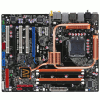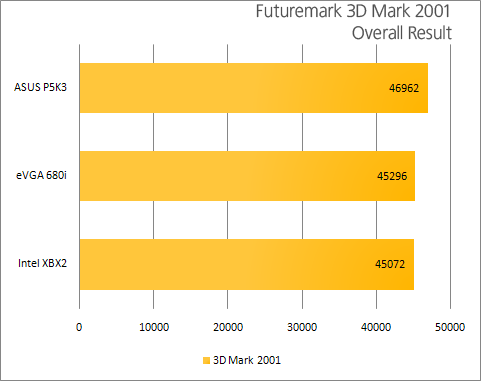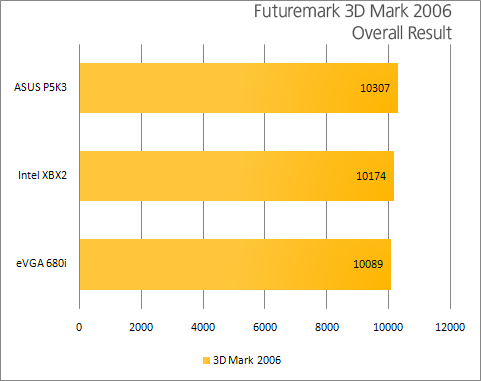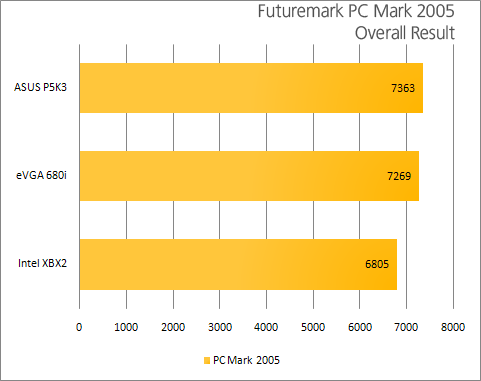- Qualcomm Launches Snapdragon 4 Gen 2 Mobile Platform
- AMD Launches Ryzen PRO 7000 Series Mobile & Desktop Platform
- Intel Launches Sleek Single-Slot Arc Pro A60 Workstation Graphics Card
- NVIDIA Announces Latest Ada Lovelace Additions: GeForce RTX 4060 Ti & RTX 4060
- Maxon Redshift With AMD Radeon GPU Rendering Support Now Available
ASUS P5K3 Deluxe WiFi-AP

Intel’s P35 chipset was only just released, but ASUS already has seven motherboards which utilize it. We are taking a look at one of their top models, the P5K3 Deluxe. This board utilizes DDR3 memory and has WiFi capabilities built-in. It also turns out to be a great overclocker.
Page 4 – Futuremark 3D Marks and PC Mark
Futuremark has long offered benchmarking tools to enthusiasts that allow them to gage their systems worth. There is a lot of skepticism revolving around the importance of the overall scores, but we enjoy running them because it’s a quick fix to see differences between platforms. Real world benchmarks are by far more important, and we will cover those on the next few pages.
Although old, 3D Mark 2001 proves a good benchmark to evaluate your systems overall performance. In 2000, this benchmark really stressed whatever GPU you owned, but today the GPU hardly comes into the equation. What does help you achieve a higher score is faster CPU and memory frequencies.

Thanks to the faster memory, the P5K3 lead the pack here.
3D Mark 2006 tests your system in a similar manner that 2001 does, except this updated version actually does bottleneck on your GPU. The faster the GPU, the better the score. Multi-core processors also help greatly improve your scores here.

Once again, the P5K3 delivered a slightly higher score than the others. Although it’s small, it’s an interesting increase given the fact that the only real difference was the motherboard. It could also be thanks to the faster memory, and even though it has far more loose timings than what we would see on DDR2, it still is mighty fast.
PC Mark is somewhat similar to SYSmark, which we discussed on the previous page. The difference is that PC Mark focuses more on synthetic benchmarking schemes, such as disk access and multi-tasking. Very little of the entire test will be seen by you though, as it all goes on behind the scenes.

I guess it is not so much of a surprise that the P5K3 took the top spot once again. I am unsure whether this is thanks to the P35 chipset or DDR3 frequencies, but I will understand this more once I acquire a second P35 DDR3 board.
With these synthetic benchmarks out of the way, lets move onward to some real-world multi-media tests.
|
|
Support our efforts! With ad revenue at an all-time low for written websites, we're relying more than ever on reader support to help us continue putting so much effort into this type of content. You can support us by becoming a Patron, or by using our Amazon shopping affiliate links listed through our articles. Thanks for your support!





